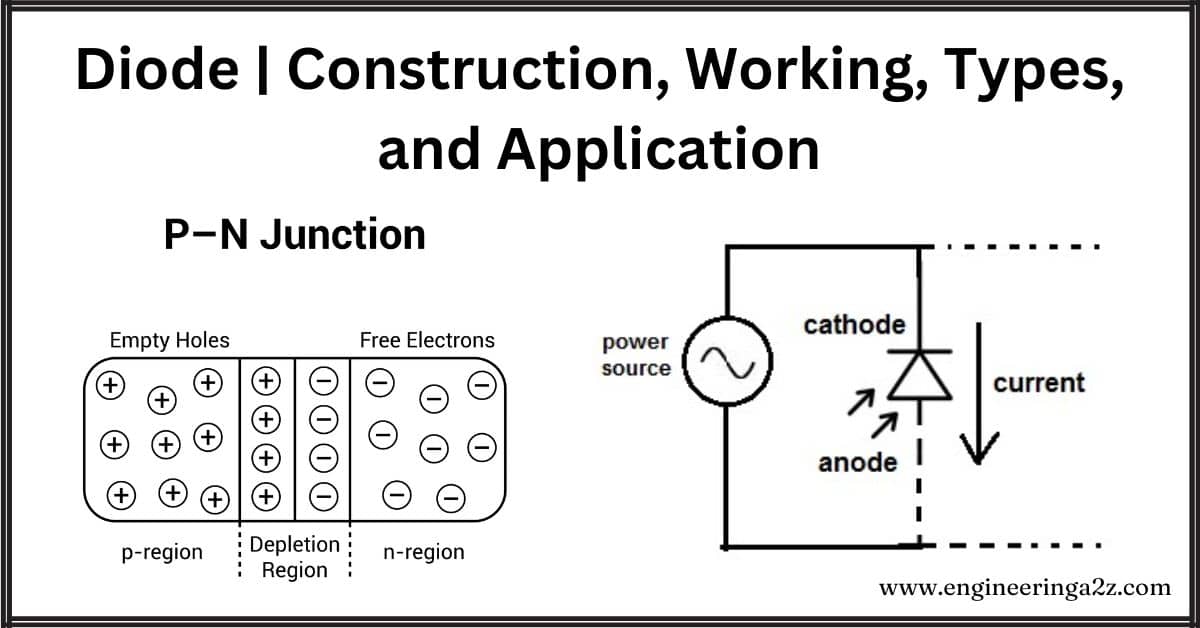
Table of Contents
Introduction
A diode is a small device with two ends, and it mostly allows electricity to flow in one direction only. One end is like a smooth road (low resistance) where electricity can easily pass, while the other end is like a roadblock (high resistance), making it hard for electricity to go back the other way.
What is Diode?
Diodes are like electrical guards that keep circuits safe by controlling voltage and changing alternating current (AC) into direct current (DC). They’re made from special materials like silicon and germanium. Even though they let electricity flow in only one direction, they do it in different ways. There are various types of diodes, each used for different purposes.
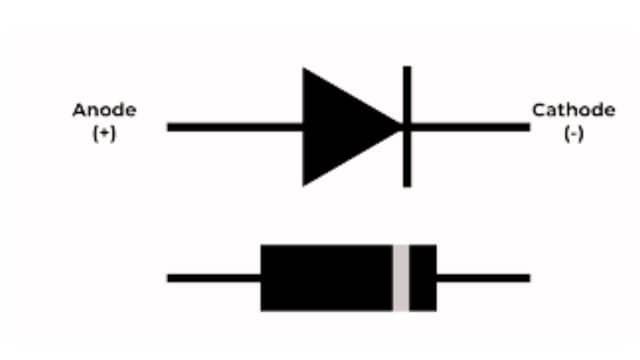
Construction of Diode
- Intrinsic vs. Extrinsic Semiconductors:
- Intrinsic Semiconductors: Imagine it like a group of friends playing a game, and they’re all equal in number. This is like an intrinsic semiconductor where electrons and holes (empty spots for electrons) are balanced.
- Extrinsic Semiconductors: Now, think of adding some special players (impurities) to the game. If you add players who want to play (pentavalent impurities), you get more holes, creating a positive charge (p-type). If you add players who are a bit shy (trivalent impurities), you get extra electrons, creating a negative charge (n-type).
- Semiconductor Diode with Two Layers – p-type and n-type:
- p-type Layer (Positive Charge): Imagine this layer as a team with more players missing (holes) than usual. It’s positive because of those missing players. We call it “p-type” because it’s positively charged, and this happens when we add trivalent impurities.
- n-type Layer (Negative Charge): Now, think of this layer as a team with extra players (electrons). It’s negative because of those extra players. We call it “n-type” because it’s negatively charged, and this happens when we add pentavalent impurities.
In Simple Terms:
- The p-type layer is like a team missing a few players (positive charge).
- The n-type layer is like a team with extra players (negative charge).
- Together, they form a semiconductor diode, and how they interact helps control the flow of electricity in electronic devices.
Working of Diode
- Charge Carriers in N-type and P-type:
- N-type (Negative): Think of this as a team where most of the players are electrons, and there are just a few spots for players (holes). It’s like having a team with lots of players but a small number of open positions.
- P-type (Positive): Now, imagine a team where most of the players are spots for players (holes), and there are only a few actual players (electrons). It’s like a team with many spots to fill but not enough players.
- Depletion Region:
- When you put these two teams together, there’s a special area called the “Depletion Region.” This is where the extra players (electrons) from the N-type team meet the spots (holes) from the P-type team. They mix up, creating a sort of no-man’s land.
- Biasing – Reverse and Forward:
- Reverse Bias: If you connect the positive side of a battery to the N-type team and the negative side to the P-type team (anode to the N, cathode to the P), it’s like saying, “Stay separate!” The players and spots are pushed away, making it harder for electricity to flow. This is reverse bias.
- Forward Bias: On the other hand, if you connect the positive side of the battery to the P-type team and the negative side to the N-type team (anode to the P, cathode to the N), it’s like saying, “Come together!” The players and spots are encouraged to mix, allowing electricity to flow more easily. This is forward bias
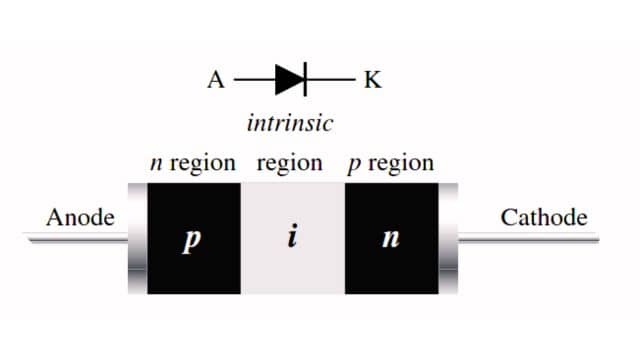
Types of Diodes
- Light Emitting Diode
- Laser diode
- Avalanche diode
- Zener diode
- Schottky diode
- Photodiode
- PN junction diode
1. Light Emitting Diode (LED)
Electric current makes special diodes, called LEDs, create light. Some diodes make invisible light. LEDs come in various colors, and tricolor LEDs can show three colors. The light color depends on the semiconductor’s energy gap.
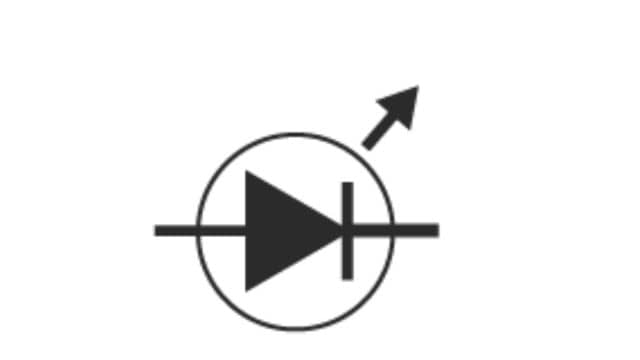
2. Laser diode
This diode is unique; it makes laser light, used in CD drives and DVDs. It costs more than LEDs but less than other lasers. The downside is it has a limited lifespan.
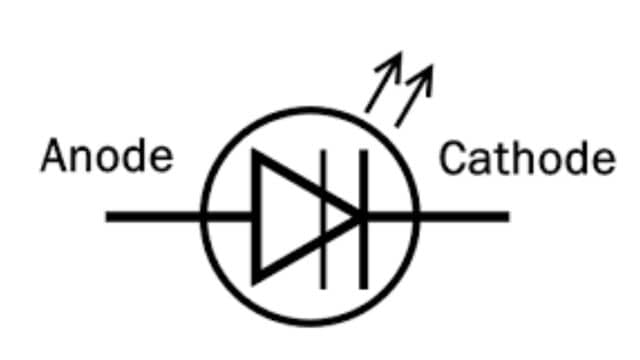
3. Avalanche diode
This diode works in reverse bias and uses the avalanche effect. When a specific voltage is reached, there’s an avalanche breakdown, and it becomes sensitive. It’s great for detecting light, like in photosensors.
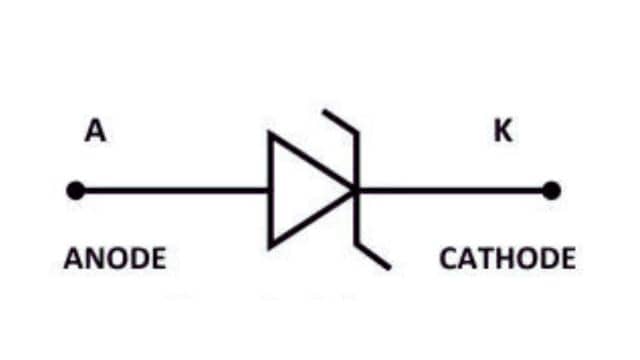
4. Zener diode
This diode is super handy; it gives a steady voltage. It works in reverse bias and breaks down at a set voltage. If we control the current, we get a reliable voltage. Zener diodes are commonly used in power supplies for this purpose.
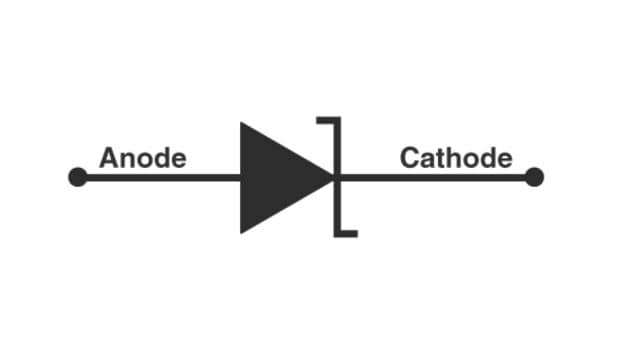
5. Schottky diode
This diode needs less voltage to work than others. It shows a drop at low currents, around 0.15 to 0.4 volts. Special construction gives it this ability. Schottky diodes are widely used in making rectifiers.
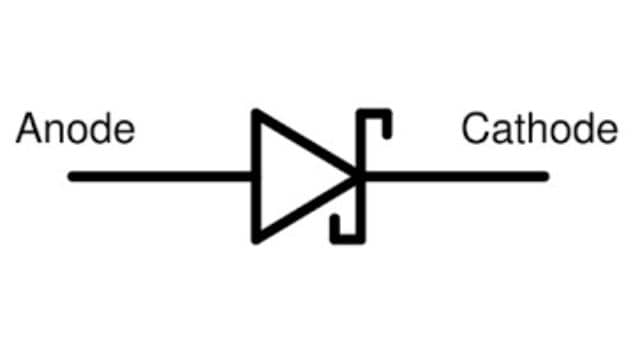
6. Photodiode
Think of a photodiode like a tiny light detective. It can notice even a bit of current caused by light. This special diode, when reversed, is super useful in solar cells, and light detectors, and can even make electricity.
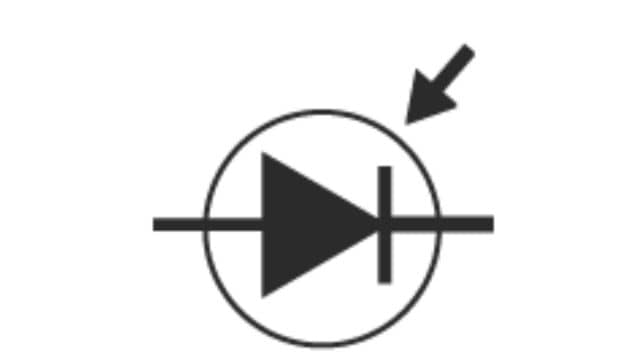
7. PN junction diode
This diode is like a traffic cop for electricity, called a rectifier diode. It has two layers – one with P-type stuff and the other with N-type. The meeting point is a P-N junction. It lets electricity flow one way and stops it the other way.
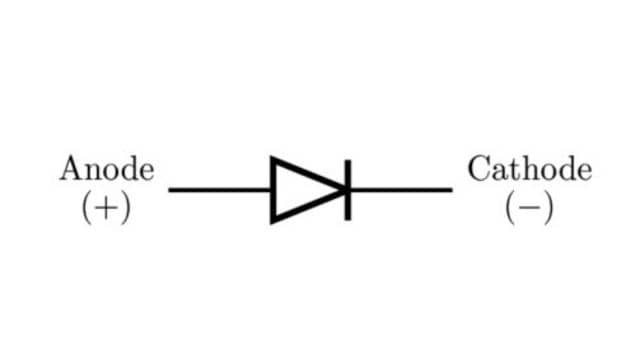
Characteristics of Diode
The following are the characteristics of the diode:
1. Forward-biased Diode:
- Imagine the diode as a little gate. When you push the gate open by connecting it to a battery, a small amount of voltage (like energy) is needed. For silicon gates, it’s like needing 690 tiny units of energy, and for germanium gates, it’s 300 tiny units. One side of the gate becomes positive, and the other becomes negative.
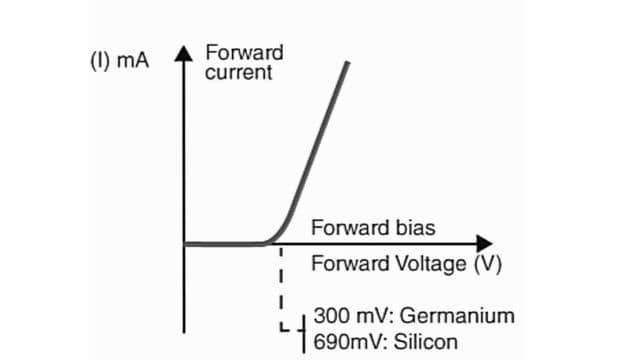
2. Reverse-biased Diode:
- Now, if you try to close the gate completely oppositely using the battery, the diode says, “Nope, staying closed!” The energy needed to keep it closed is -20 tiny units for silicon gates and -50 tiny units for germanium gates. The positive and negative sides switch places.
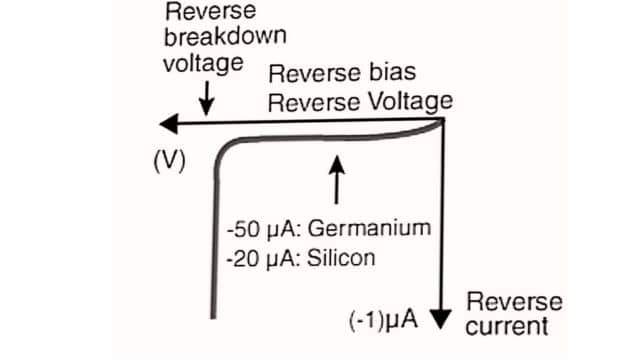
3. Zero-biased Diode:
- When you don’t connect the diode to a battery at all, it’s like the gate is just sitting there. The energy difference between the positive and negative sides is zero, making it a zero-biased diode.
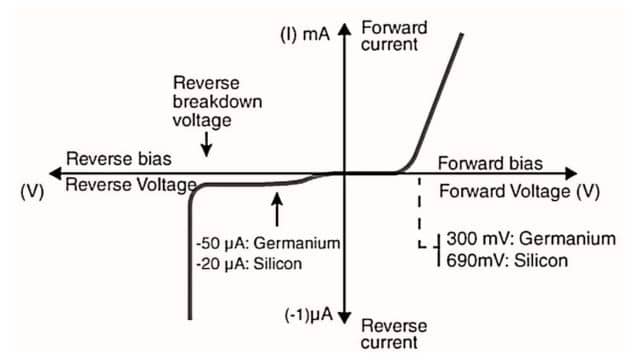
Applications of Diode
- Diodes as a Rectifier:
- Think of diodes like a traffic cop for electricity. In a rectifier, diodes make sure that electrical current flows in one direction only, like turning AC (alternating current) into DC (direct current). It’s like guiding traffic to follow a specific path.
- Diodes in the Clipping Circuit:
- Picture a diode as a gatekeeper in a line. In a clipping circuit, it blocks or trims part of the electrical signal, letting only certain portions pass through. It’s like cutting off the tops or bottoms of waves, making the signal change its shape.
- Diodes in Clamping Circuits:
- Imagine diodes as level adjusters. In clamping circuits, they help shift the entire electrical signal up or down. It’s like lifting or lowering a platform, so the whole signal sits at a different height.
- Diodes in Logical Gates:
- Think of diodes as decision-makers in electronics. In logical gates, they help control whether a signal gets through or not, based on certain conditions. It’s like saying “yes” or “no” to letting electricity pass and making decisions in electronic processes.
- Diodes in Reverse Current Protection:
- Picture diodes as a one-way gate. In reverse current protection, they act like a trapdoor that only allows electricity to flow in one direction. It prevents electrical current from going the wrong way, protecting devices from potential damage.
Frequently Asked Questions (FAQs)
What is a diode used for?
A diode is used to control the direction of electric current in electronic circuits. It acts as a one-way valve, allowing current to flow in one direction while blocking the other.
What is a Zener diode used for?
A Zener diode is used to regulate voltage in electronic circuits. It maintains a constant voltage level, crucial for stabilizing power supplies and preventing voltage spikes, making it useful in various applications.
What are the properties of a photodiode?
A photodiode is a light-sensitive semiconductor device. When exposed to light, it produces a flow of current. It’s used in light detection, solar cells, and photometry due to its sensitivity.
What is Forward-biased and Reverse-biased?
Forward bias occurs when a voltage is applied to a diode, allowing current to flow easily. The positive voltage on the anode repels the positive charge carriers, aiding current flow. In reverse bias, the voltage opposes the current flow. It increases the depletion region’s width, making it harder for current to pass through the diode.
Read Also:
- Feedback Amplifier | Types, Properties, and Topologies
- Physical Sensors | Classification, Types, and Advantages
- DIAC | Construction | Working and V-I Characteristics
- TRIAC | Construction, Working And V-I Characteristics
- Dual Converter | Introduction, Operation Mode and Application





Leave a Reply